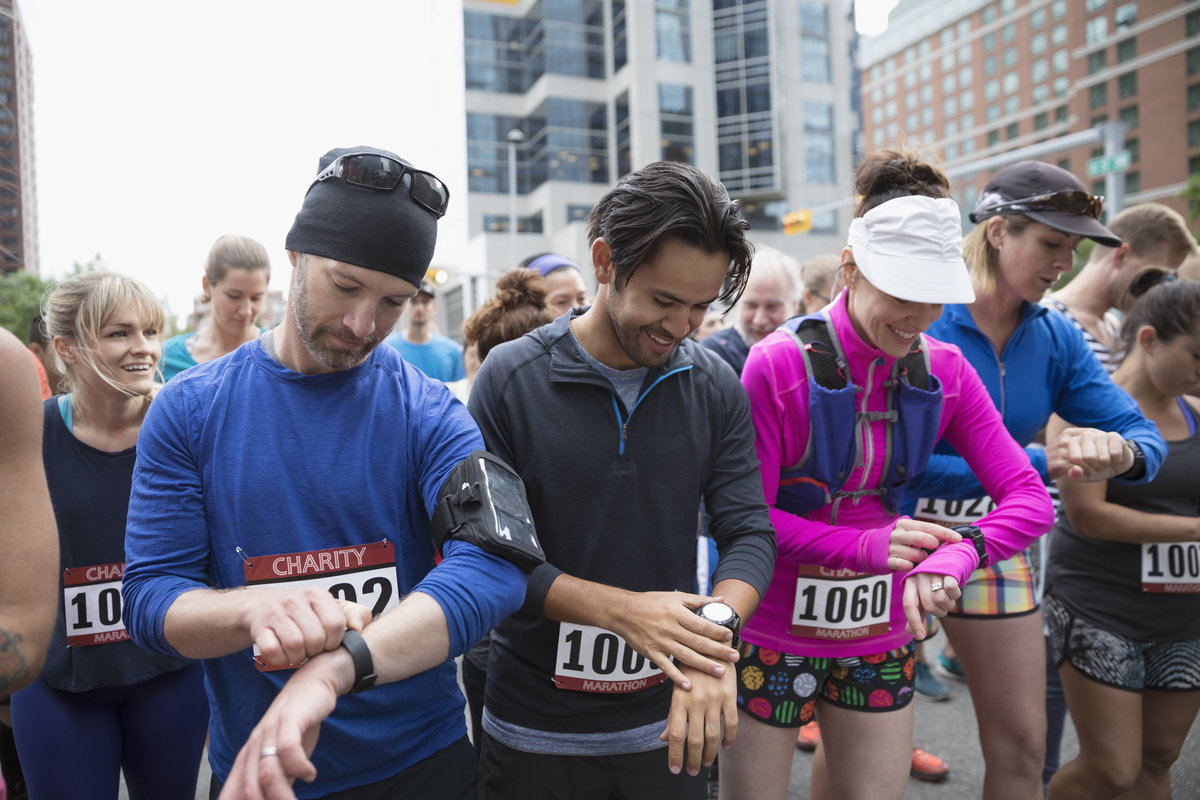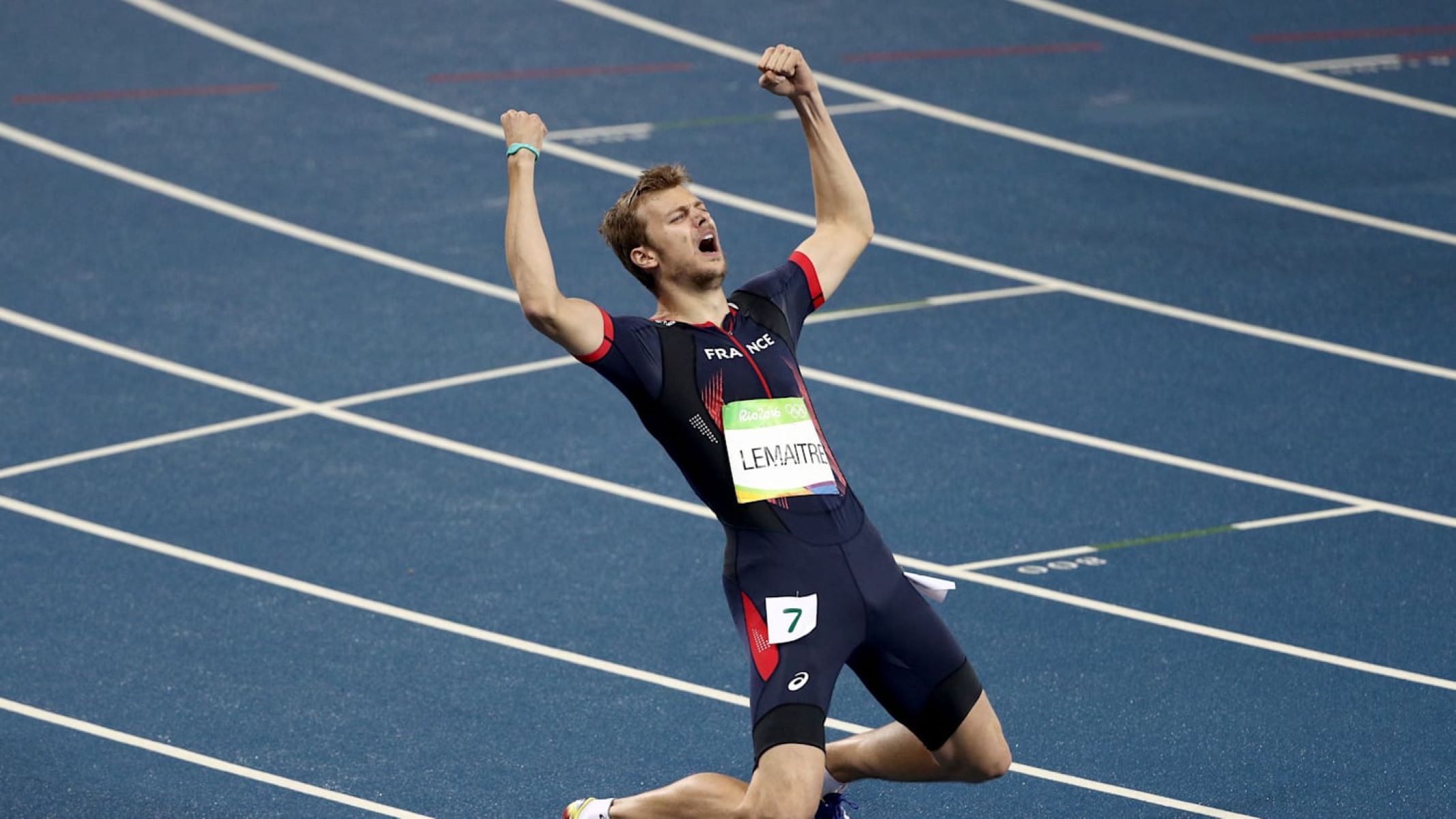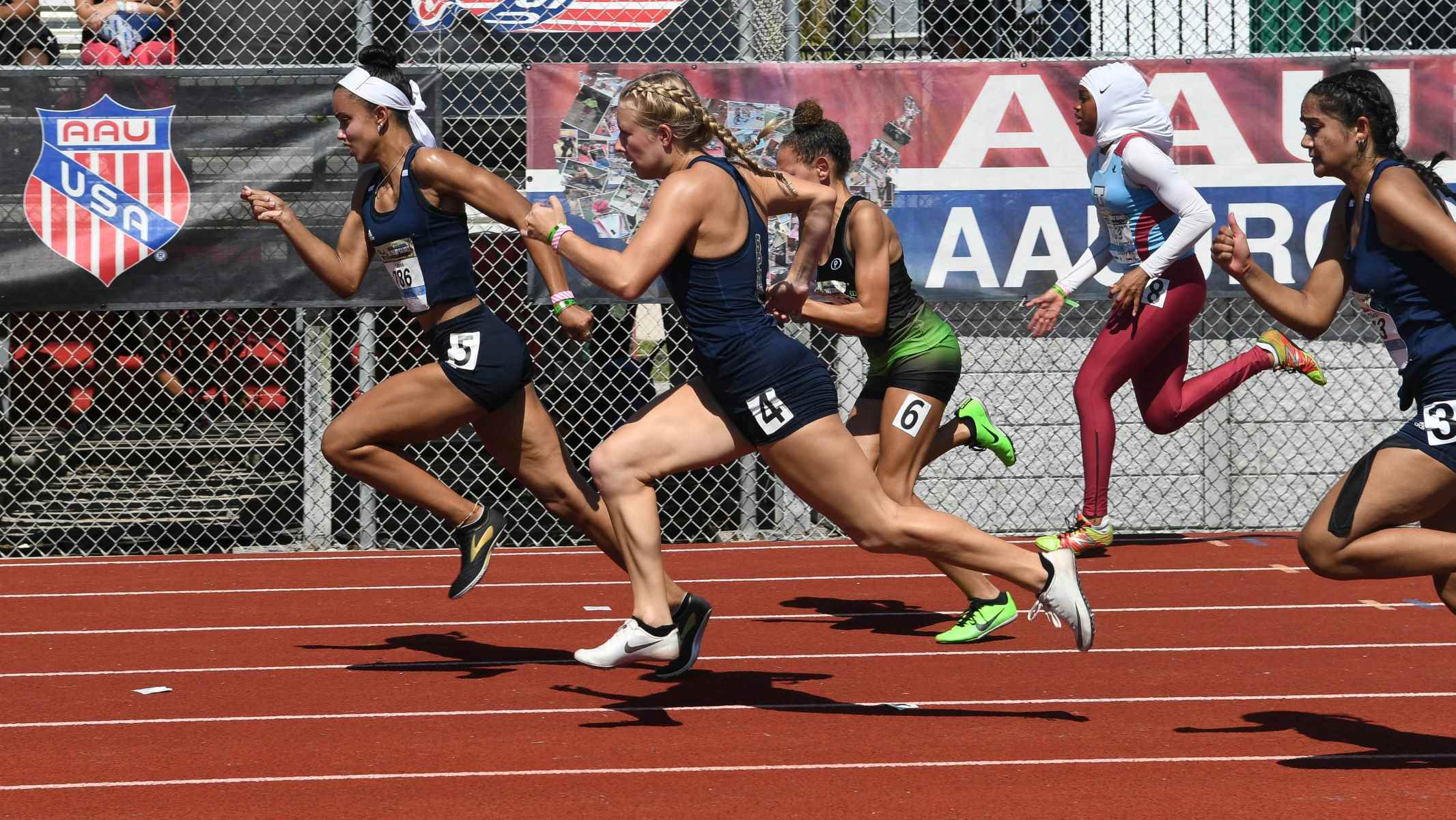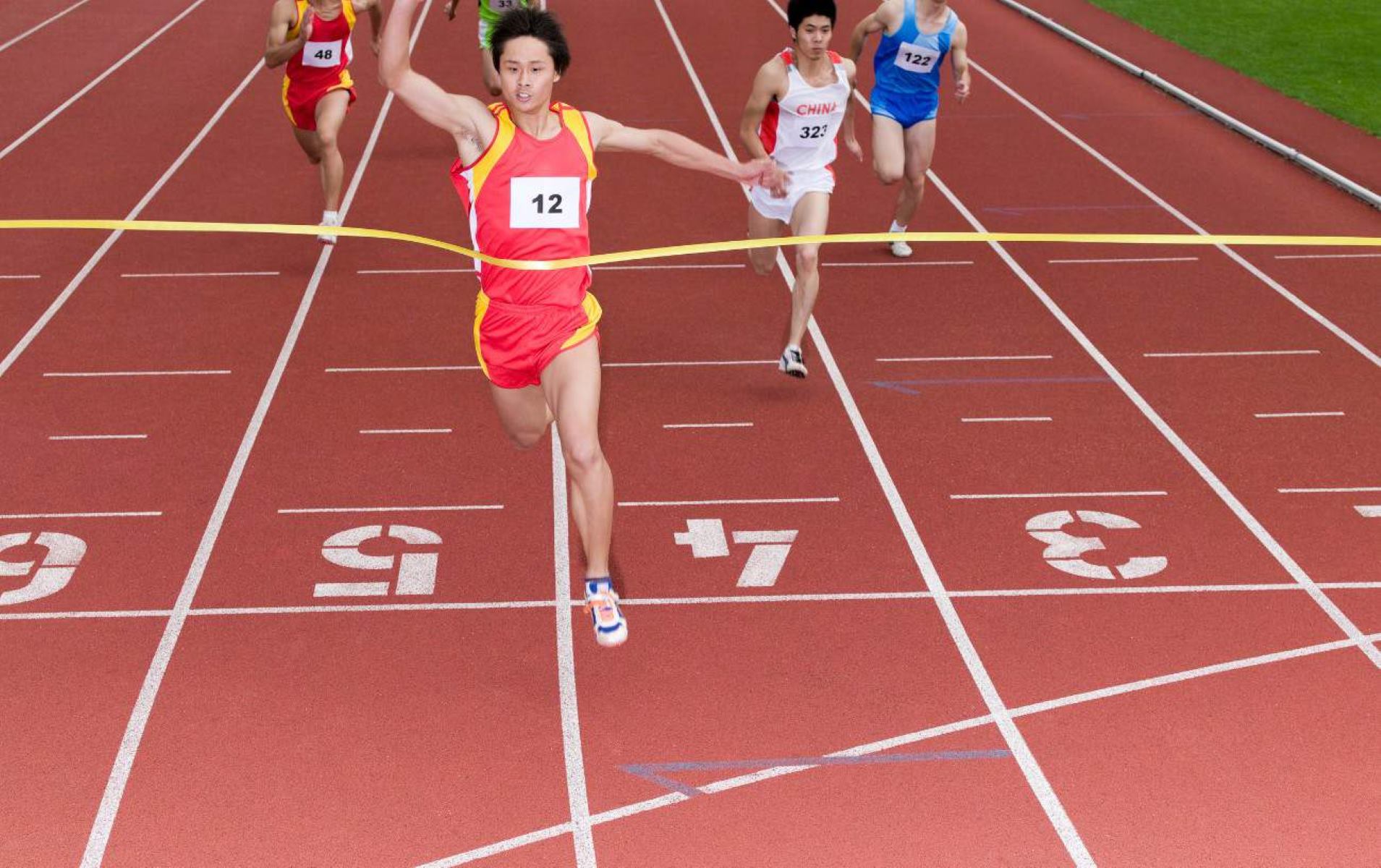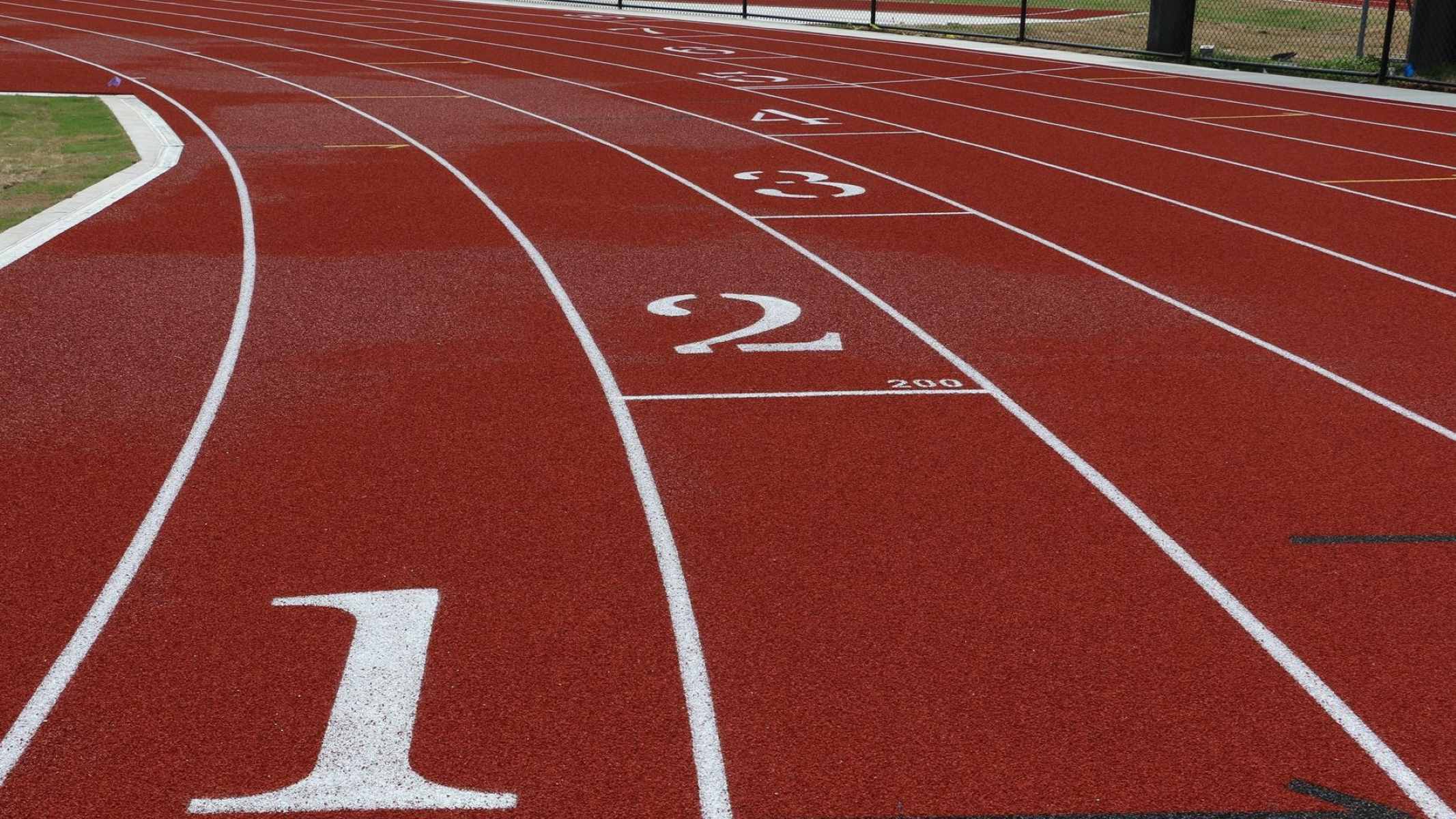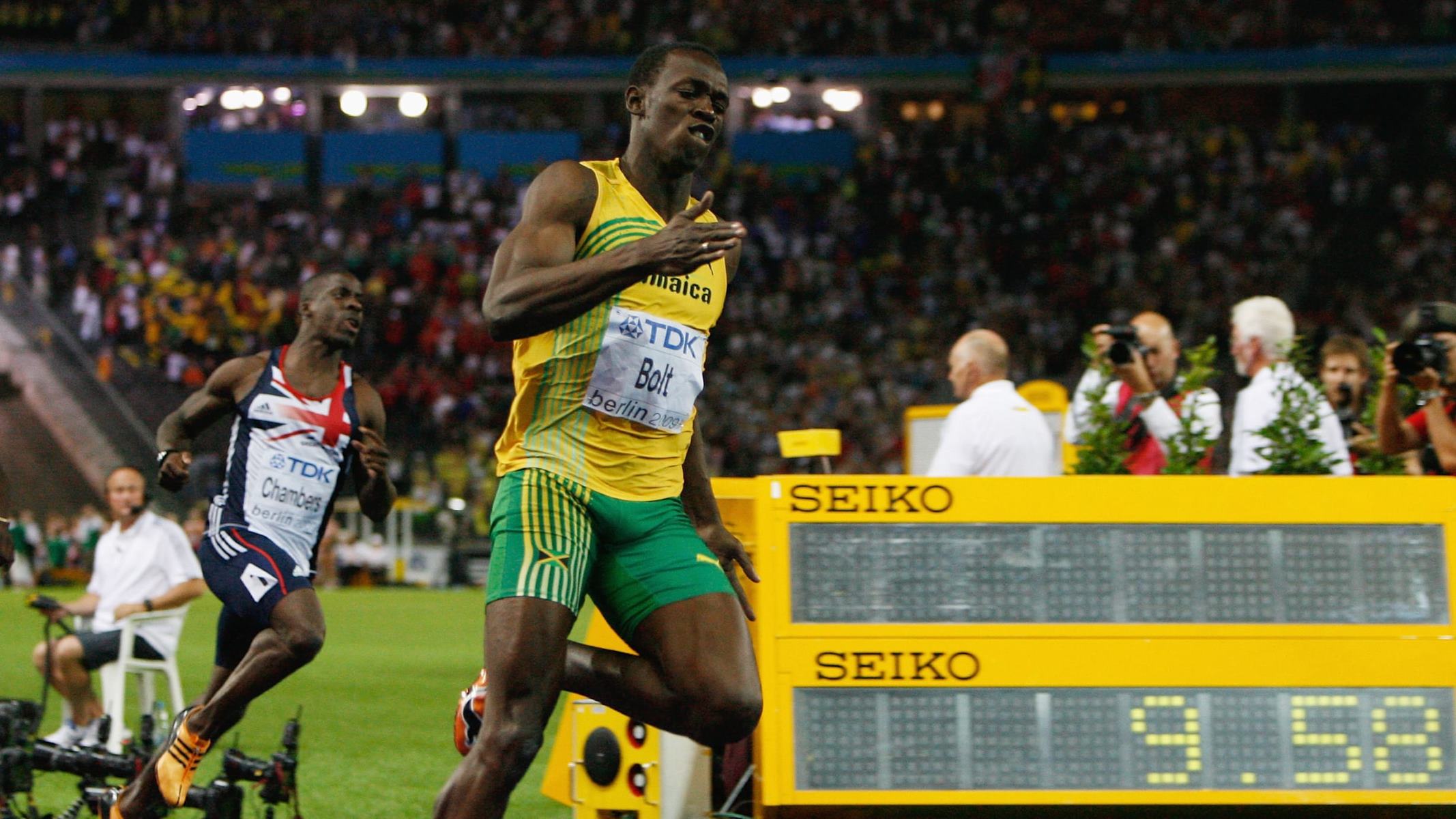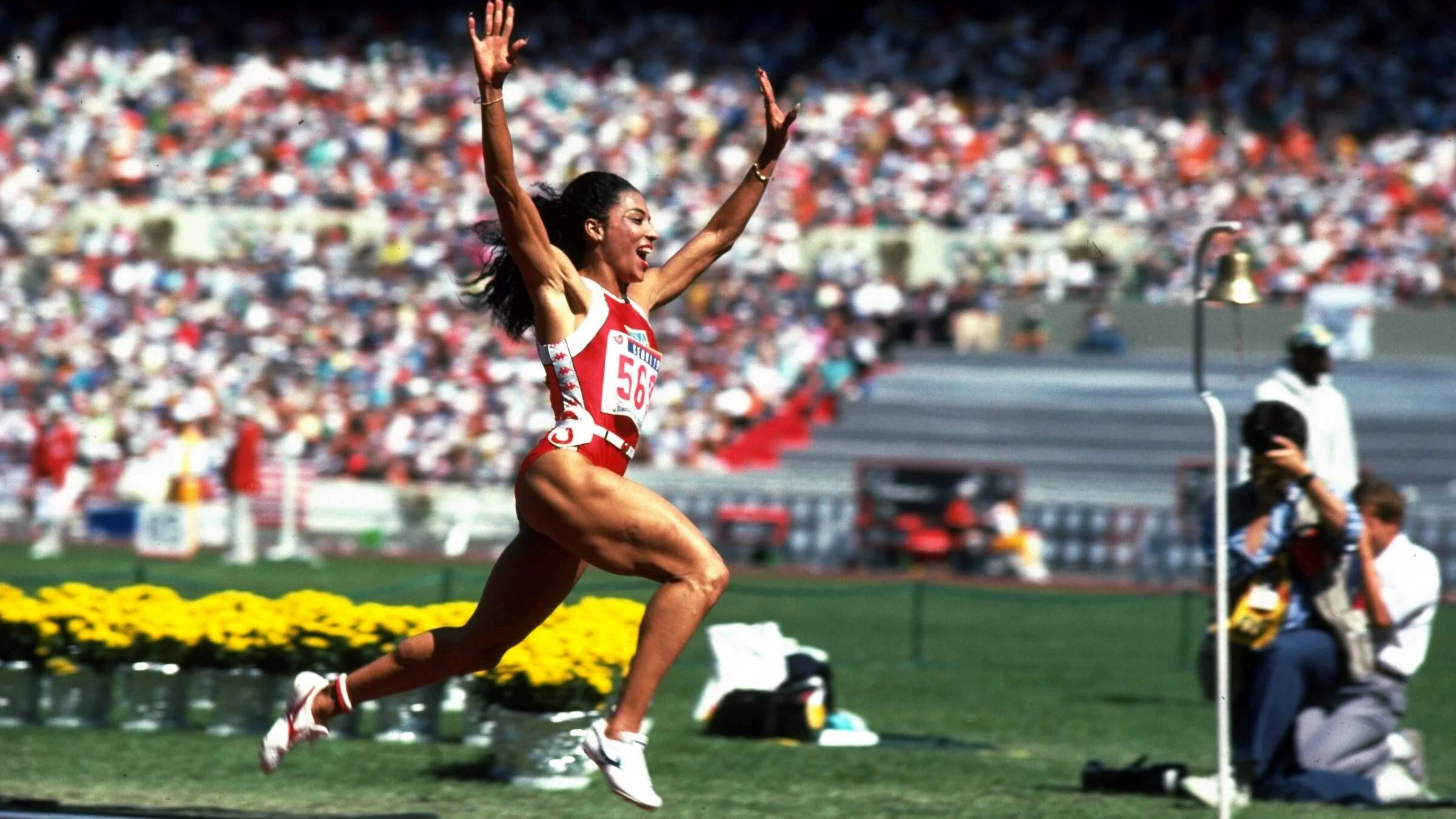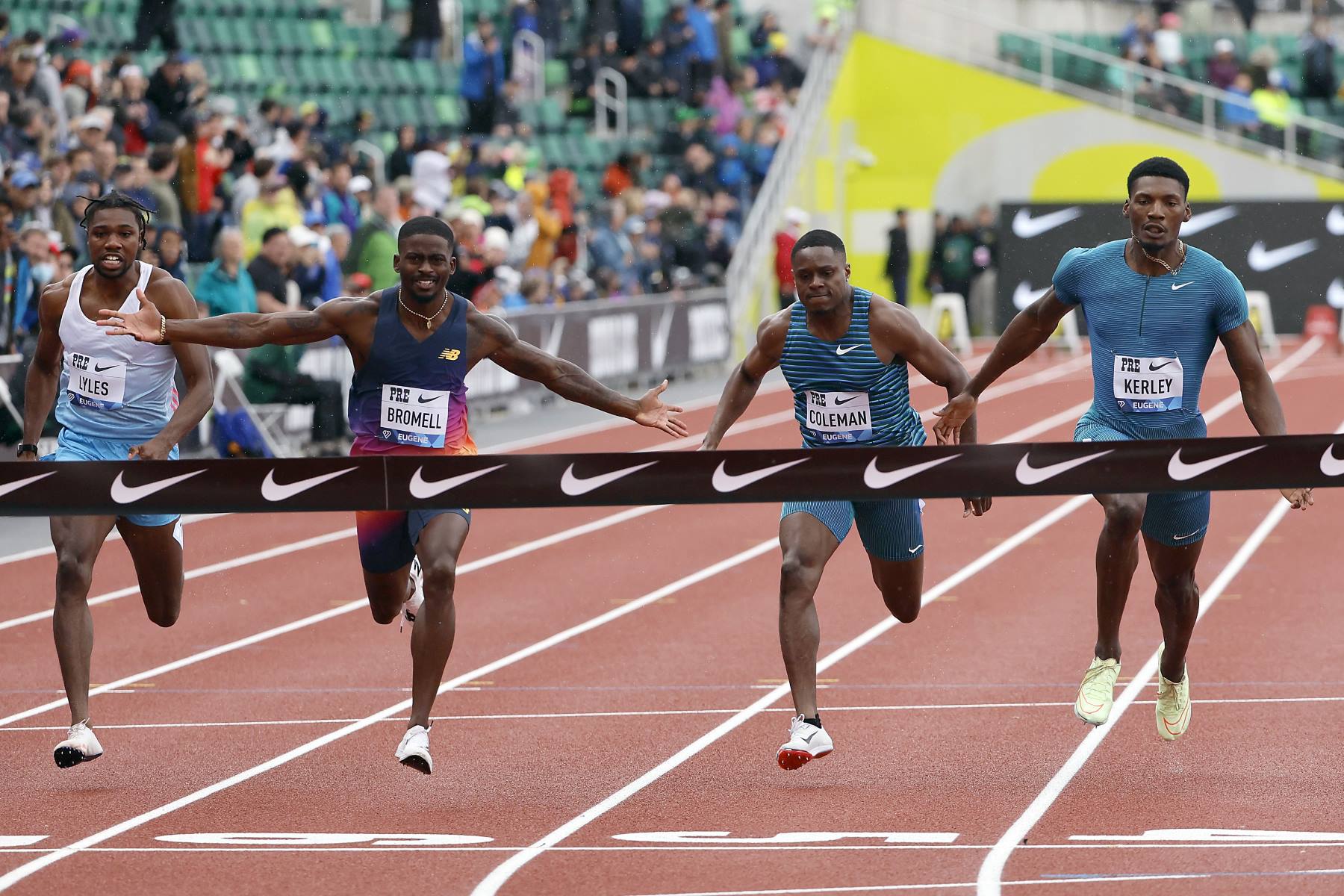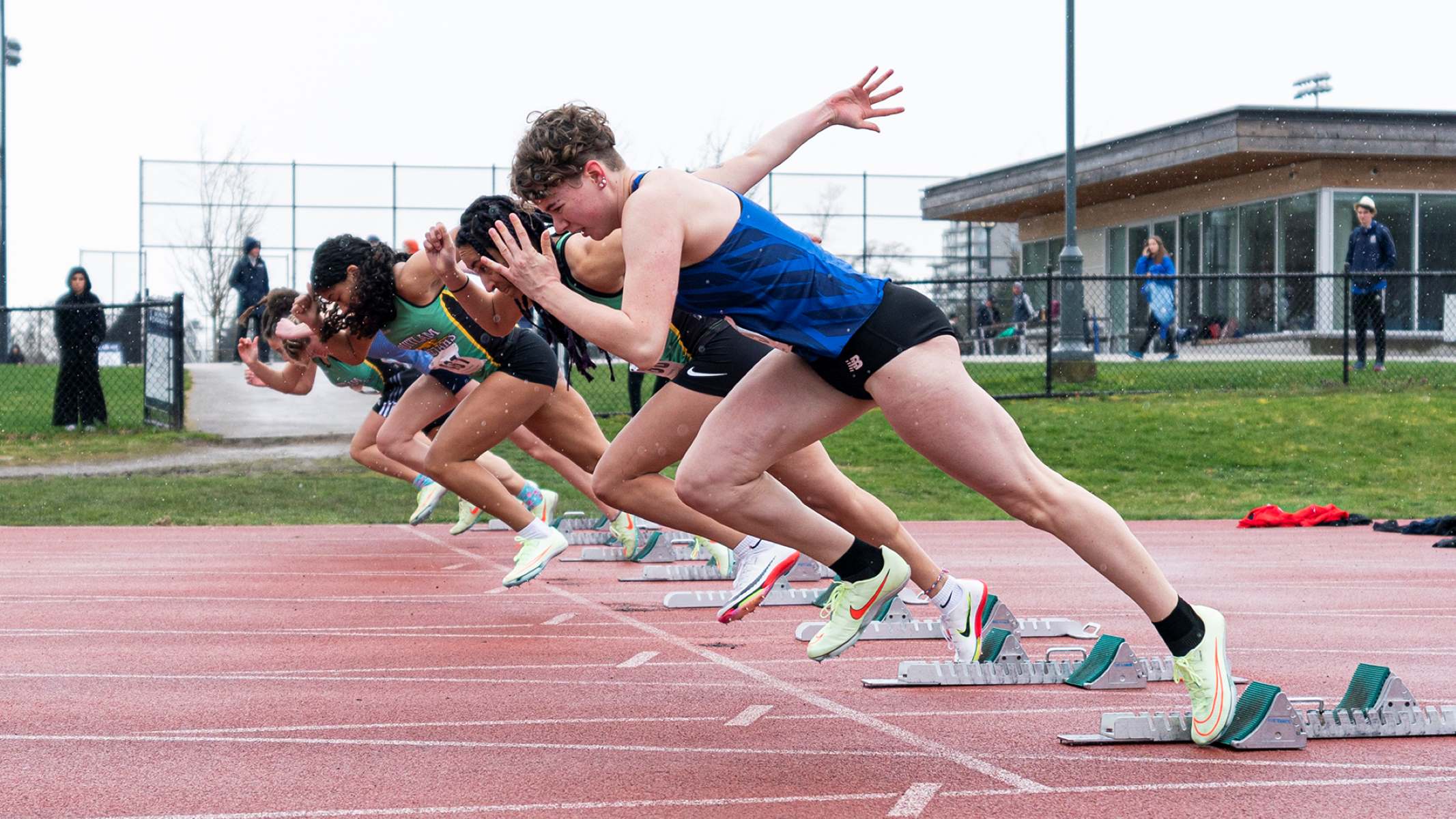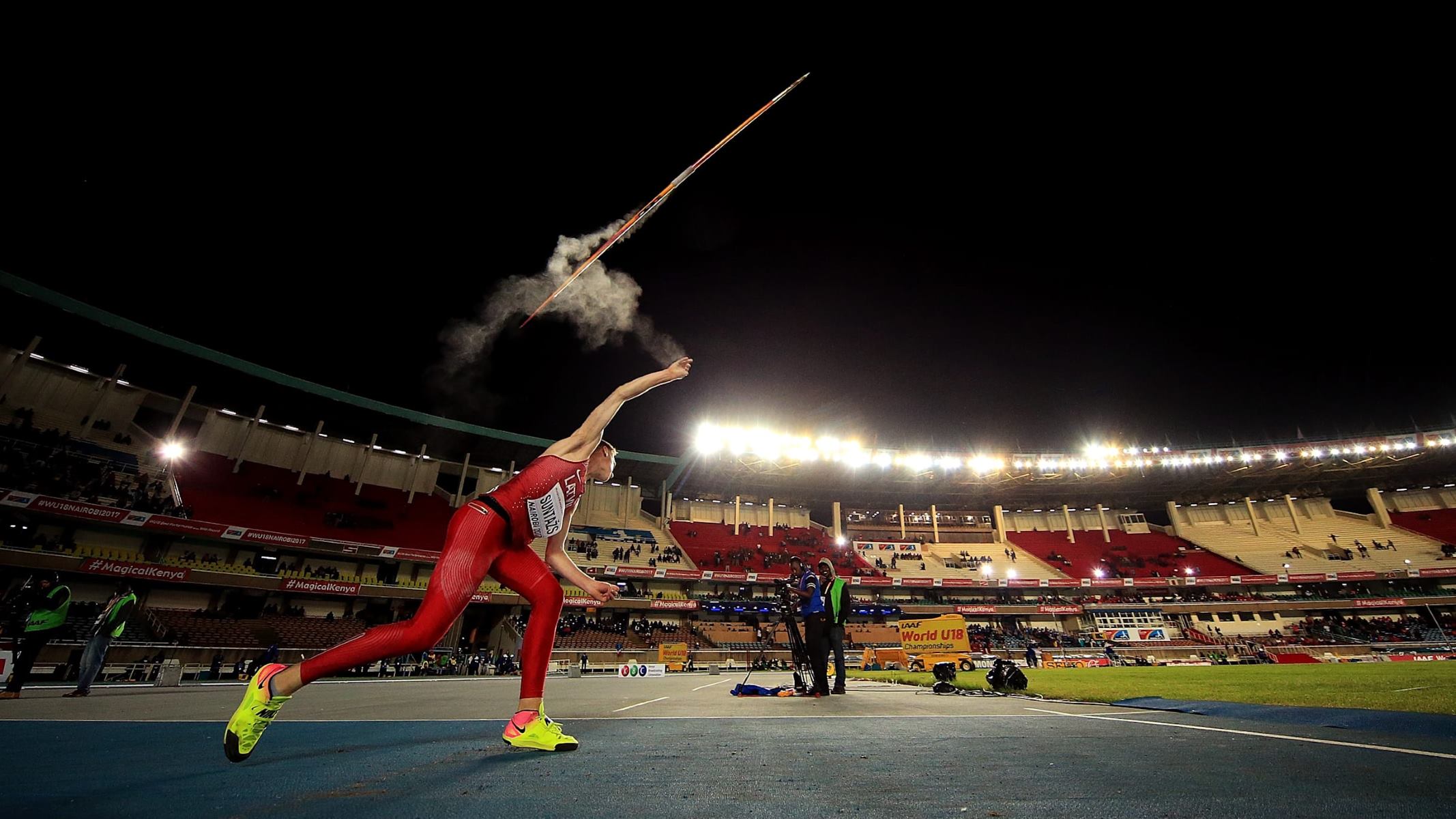

Featured
How Was Track And Field Invented
Published: September 15, 2023
Discover the fascinating history of track and field and how it was invented. Explore the origins and evolution of this featured sport.
Introduction
Track and field is a sport that has been a part of human history for centuries. It encompasses a wide range of athletic events, including sprints, jumps, throws, and distance running. From its humble beginnings as a means of survival and combat, it has evolved into a highly competitive and globally celebrated sport.
The origins of track and field can be traced back to ancient civilizations, where running, jumping, and throwing were essential skills for hunting and warfare. As societies developed, these skills transformed into organized competitions and eventually became integral parts of religious and cultural celebrations.
Over time, track and field events became prominent features of prestigious events like the ancient Olympic Games and the Olympic Games of the modern era. These events provided a platform for athletes to showcase their exceptional physical abilities and for nations to come together in friendly competition.
Today, track and field continues to captivate audiences worldwide, drawing athletes from all corners of the globe. It showcases not only the remarkable athletic prowess of its participants but also the relentless pursuit of excellence and the undying competitive spirit.
In this article, we will delve into the rich history of track and field, exploring its origins, development, and notable figures who have shaped the sport over the years. We will also examine the evolution of track and field events, highlighting their transformation into the diverse and thrilling spectacles they are today. By the end, you will have a deeper appreciation for the sport and its enduring legacy.
Origins of Track and Field
The origins of track and field can be traced back to ancient civilizations, where running, jumping, and throwing were integral parts of human activities. In these early societies, these skills were crucial for survival, whether it was hunting for food or defending against enemies. Over time, these physical abilities evolved into organized competitions that laid the foundation for modern track and field events.
One of the earliest recorded instances of organized athletic competition dates back to ancient Egypt, where the sport of foot racing was prevalent. The Egyptians held races as early as 2000 BCE, with participants sprinting on specially designed tracks. These races were not only a test of speed but also a way to showcase physical strength and endurance.
Around the same time, the Greeks also engaged in athletic competitions. Much like the Egyptians, the Greeks held foot races as part of their religious and cultural events. However, it was in ancient Greece that the concept of a comprehensive athletic festival first emerged.
The ancient Olympic Games, held in Olympia, Greece, starting in 776 BCE, were the pinnacle of athletic achievement in the ancient world. Initially, the only event in the Olympics was a 200-meter foot race, known as the stadion. However, as the games gained popularity, the number and variety of events grew, encompassing running, jumping, throwing, and even equestrian events.
A significant aspect of the ancient Greek track and field competitions was their connection to mythology. The Olympics were believed to be in honor of the god Zeus, and winning an event was seen as a divine favor. Victorious athletes were celebrated as heroes and were regarded with great honor and admiration.
As civilizations developed and interacted with one another, the influence of track and field spread throughout the world. The Romans, for instance, adopted many of the Greek practices when it came to athletic competitions. They held their own version of the Olympics, known as the Roman Games, to honor their gods and demonstrate their power and prowess.
While the ancient Olympic Games eventually declined and were abolished in 393 CE, the legacy of track and field endured. The concept of organized athletic competitions transcended cultures and continued to evolve, setting the stage for the development of modern track and field.
Ancient Olympic Games
The ancient Olympic Games were a cornerstone in the history of track and field. These games were held in Olympia, Greece, beginning in 776 BCE and continued for nearly 12 centuries. The Olympics were not just a platform for physical competition but also a celebration of Greek culture, religious devotion, and the pursuit of excellence.
Originally, the ancient Olympic Games consisted of a single foot race called the stadion, which spanned approximately 200 meters. Over time, the number and variety of events expanded significantly, reflecting the diverse skill sets of ancient athletes.
The Olympic events included sprints of varying lengths, such as the diaulos (twice the length of the stadion) and the dolichos (ranging from 7 to 24 laps around the stadium). Additionally, there were jumping events, including the long jump, as well as throwing events like the discus and javelin.
Participation in the ancient Olympics was limited to male athletes from Greek city-states who met specific criteria. The games were open only to freeborn Greeks and those who could prove their Greek ancestry. Furthermore, competitors had to undergo a strict training regimen and take an oath to abide by the rules and regulations of the games.
Winning an event at the ancient Olympics brought immense honor to both the athlete and their city-state. Victorious athletes were celebrated as heroes and were often rewarded with valuable prizes, including olive wreaths, a symbol of victory, and monetary rewards. Their names were inscribed on the walls of the Olympic stadium, forever commemorating their achievement.
The ancient Olympic Games had a tremendous impact on Greek society. The games were closely intertwined with religion, as they were believed to be in honor of Zeus, the king of the Greek gods. Before the competitions, athletes and spectators would participate in rituals and sacrifices to seek favor from the gods.
The Olympics also served as a platform for promoting peace and unity amongst the Greek city-states. During the games, a truce, known as the Olympic Truce, was declared, which allowed athletes, spectators, and officials to travel safely to and from Olympia without fear of conflict. This tradition fostered a spirit of camaraderie and emphasized the importance of coming together in friendly competition.
Ultimately, the ancient Olympic Games left a profound legacy in the history of track and field. They laid the groundwork for the organized competitions that exist today and highlighted the values of athleticism, sportsmanship, and cultural exchange.
Development of Modern Track and Field
The development of modern track and field can be traced back to the 19th century, when organized sports and athletic clubs began to emerge. During this time, there was a renewed interest in physical fitness and competitive sports, leading to the formalization of track and field events and the establishment of international governing bodies.
One significant milestone in the development of track and field was the formation of the Amateur Athletic Association (AAA) in England in 1880. The AAA became the governing body for the sport and was responsible for standardizing rules, organizing competitions, and promoting amateurism in track and field.
Soon after the establishment of the AAA, the first modern Olympic Games were held in Athens, Greece, in 1896. The Olympic Games served as a catalyst for the international growth and popularity of track and field, as athletes from various nations competed against one another in a spirit of friendly competition.
As the 20th century progressed, track and field events continued to evolve and expand. New events were introduced, such as the 100-meter sprint, the 110-meter hurdles, and the pole vault. Women’s track and field also gained recognition and began to be included in major competitions.
Advancements in training techniques, technology, and equipment also played a role in the development of modern track and field. Athletes began to explore new methods to enhance their performance, including specialized training programs, nutritional strategies, and the use of innovative sporting gear.
Furthermore, the increased internationalization of the sport led to the establishment of international governing bodies. In 1912, the International Association of Athletics Federations (IAAF) was founded to oversee and regulate track and field on a global scale. The IAAF became responsible for setting uniform rules, organizing major championships, and promoting the sport worldwide.
In recent decades, track and field has witnessed significant advancements in terms of records broken and athletic achievements. Technological advancements, such as improved track surfaces, lighter and more aerodynamic equipment, and advanced timing systems, have contributed to athletes continuously pushing the boundaries of human performance.
The development of modern track and field has also seen a greater emphasis on fair play, anti-doping measures, and the promotion of gender equality. Efforts have been made to ensure a level playing field for all athletes and to create opportunities for underrepresented groups in the sport.
Today, track and field continues to captivate audiences around the world, with events like the Olympic Games and World Championships showcasing the incredible talent and dedication of athletes. The sport has come a long way from its humble beginnings, and its continuous growth and evolution ensure an exciting future for track and field.
Key Figures in Track and Field History
Throughout the history of track and field, there have been numerous individuals who have made significant contributions to the sport. These key figures have not only achieved great success in their own athletic endeavors but have also left a lasting impact on the development and progression of track and field as a whole.
One such figure is Jesse Owens, an American sprinter and long jumper who rose to prominence in the 1930s. Owens gained international recognition when he won four gold medals at the 1936 Berlin Olympics, debunking the myth of Aryan superiority espoused by Adolf Hitler and Nazi Germany.
Another iconic figure in track and field history is Fanny Blankers-Koen, a Dutch athlete who dominated the sport in the 1940s. Known as the “Flying Housewife,” Blankers-Koen won four gold medals at the 1948 London Olympics, breaking records and challenging societal conventions about women in athletics.
One of the most revered figures in modern track and field is Usain Bolt, a Jamaican sprinter who has dominated the men’s sprints in the 21st century. Bolt holds multiple world records and is the only athlete to win the 100-meter, 200-meter, and 4×100-meter relay events at three consecutive Olympic Games.
Wilma Rudolph, an American sprinter, overcame adversity to become one of the most inspiring figures in track and field history. Despite being afflicted with polio as a child, Rudolph went on to win three gold medals at the 1960 Rome Olympics, becoming a symbol of perseverance and determination.
Carl Lewis, an American track and field athlete, is widely regarded as one of the greatest long jumpers and sprinters in history. He won nine Olympic gold medals and set numerous world records, solidifying his legacy as one of the sport’s all-time greats.
Another key figure in track and field history is Joan Benoit Samuelson, an American long-distance runner. Samuelson won the first women’s Olympic marathon in 1984 and played a significant role in advocating for and advancing women’s participation in long-distance running.
These and many other athletes, coaches, and visionaries have played a crucial role in shaping the history of track and field. Their achievements have not only inspired future generations of athletes but have also paved the way for greater inclusivity, innovation, and excellence in the sport.
Evolution of Track and Field Events
Track and field events have undergone a remarkable evolution over the centuries, transforming from simple demonstrations of physical prowess to highly specialized and diverse competitions. The constant drive for improvement and the pursuit of human performance have led to the creation of new events and the refinement of existing ones.
In ancient Greece, the track and field events were centered around basic athletic skills like running, jumping, and throwing. The stadion, a 200-meter foot race, was the primary event in the ancient Olympics. However, as civilizations progressed, new events emerged to challenge athletes and test their abilities.
As track and field became more organized and standardized in the 19th and early 20th centuries, new events were introduced to provide a broader range of tests for athletes. The first major expansion was the inclusion of middle-distance running events, such as the 800 meters and the mile, which added a new level of strategy and endurance to track competitions.
Over time, more specialized events were added to the track and field repertoire. The hurdles, both in sprint and long-distance variants, became regular fixtures, requiring athletes to navigate a series of evenly spaced barriers at high speeds. The pole vault, which originated in Europe, introduced a thrilling combination of aerial skills and physical strength.
In the field events, advancements in engineering and equipment led to the development of new throwing and jumping techniques. The discus and shot put events required athletes to demonstrate strength and technique in projecting heavy objects over considerable distances, while the long jump and high jump challenged participants to soar through the air with precise timing and athleticism.
With each passing decade, track and field events continued to evolve. In the late 20th century, the triple jump, where athletes have to execute three consecutive jumps, was added to the roster. The hammer throw, a traditional Scottish sport that dates back to the Middle Ages, found its place in modern track and field competitions.
Another significant development was the inclusion of racewalking, a discipline that requires participants to maintain a consistent, non-breaking stride while always having one foot in contact with the ground. Racewalking is unique to track and field due to its emphasis on technique and control, setting it apart from other distance events.
Today, track and field events continue to evolve and adapt to meet the demands of athletes and spectators. New formats, such as mixed relays and elimination races, are being introduced to add excitement and unpredictability to the sport. The goal is to provide fresh challenges and opportunities for athletes to push the boundaries of human performance.
The evolution of track and field events has not only made the sport more dynamic and engaging but has also opened doors for athletes with different skill sets and physical attributes to excel. It reflects the spirit of constant innovation and the quest for excellence that has defined track and field throughout its fascinating history.
Track and Field in the Modern Era
Track and field has transitioned into the modern era as a global and highly competitive sport. With advancements in technology, training methods, and increased global participation, track and field has transformed into a thrilling spectacle that captivates audiences around the world.
The pinnacle event in modern track and field is the Olympic Games. The Olympics bring together athletes from all nations, showcasing their incredible talents and fostering a sense of camaraderie and friendly competition. The games have become a platform for athletes to achieve greatness and leave a lasting legacy in the sport.
One of the defining moments in track and field history occurred in the 2008 Beijing Olympics, where Jamaican sprinter Usain Bolt shattered world records in the 100-meter and 200-meter events, solidifying his status as one of the greatest sprinters of all time. Bolt’s incredible speed and charisma brought a renewed global interest in the sport.
The development of technology has had a significant impact on track and field. Advanced track surfaces, lightweight and aerodynamic equipment, and innovative training methods have all contributed to improved athletic performance. Records continue to be broken, as athletes strive for greater speed, higher jumps, and longer throws.
In recent years, there has been a renewed focus on fair play and anti-doping efforts in track and field. The pursuit of clean sport and maintaining the integrity of competition have become significant priorities. Various organizations and agencies work together to enforce stringent anti-doping measures and ensure a level playing field for all athletes.
Gender equality has also become a prominent theme in modern track and field. Women’s participation and representation have seen significant advancements, with equal opportunities and recognition given to female athletes. The inclusion of events like the women’s 1500 meters and the heptathlon has showcased the extraordinary abilities of women in the sport.
Track and field has also seen a rise in popularity at the grassroots level. Local and regional competitions have become more prominent, providing opportunities for aspiring athletes to develop their skills and compete in a structured environment. This grassroots movement has contributed to the growth of the sport globally.
Social media and digital platforms have played a vital role in connecting fans with track and field events. Through live streaming, informative content, and engagement with athletes, fans can follow the sport more closely and feel a part of the action, no matter where they are located in the world.
Looking ahead, track and field in the modern era will continue to evolve, embracing new technologies and innovations. The sport will strive to create a more inclusive, fair, and sustainable environment for athletes, ensuring that track and field remains a thrilling and inspiring spectacle for generations to come.
Conclusion
The history of track and field is a testament to the enduring human spirit and the pursuit of athletic excellence. From its humble origins in ancient civilizations to its evolution into a global sport in the modern era, track and field has captured the hearts of athletes and spectators alike.
We have explored the origins of track and field, discovering how it was born out of the necessity for survival and warfare. We have delved into the ancient Olympic Games, which laid the foundation for organized athletic competitions and the celebration of physical prowess.
The development of modern track and field has seen the establishment of international governing bodies, the inclusion of new events, and the continual push for improved performance. We have learned about the key figures who have left an indelible mark on the sport, inspiring generations with their achievements and contributions.
The evolution of track and field events reflects the changing values and aspirations of society. Innovation, inclusivity, and the pursuit of fairness have shaped the sport, ensuring that it remains relevant and exciting in the modern era.
Track and field in the modern era embraces advancements in technology, anti-doping efforts, and the promotion of gender equality. The sport continues to captivate audiences worldwide, with the Olympic Games serving as the ultimate showcasing of talent and athletic prowess.
As we look to the future, track and field will continue to evolve and adapt to the changing needs and aspirations of athletes and fans. It will strive to provide a platform for athletes to push the limits of their abilities and inspire others to pursue their own athletic dreams.
In conclusion, track and field is more than just a sport; it is a reflection of the human spirit, resilience, and determination. It is a celebration of physical strength, speed, and agility. With its rich history, continuous evolution, and global appeal, track and field will continue to inspire generations of athletes and fans for years to come.
